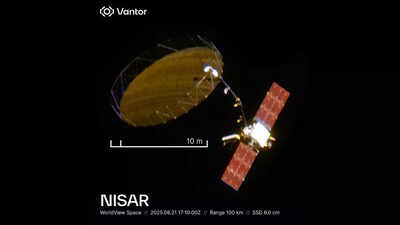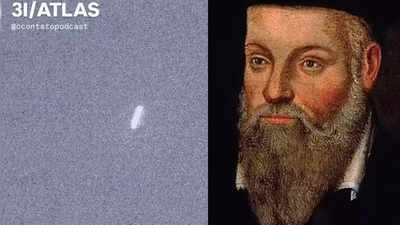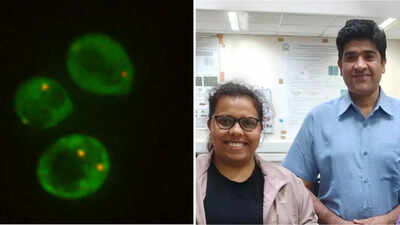700-metre second fastest asteroid 2025 SC79 spotted inside Venus orbit, racing around Sun in 128 days |

A newly identified asteroid, 2025 SC79, is drawing global attention from astronomers due to its unusual orbit and size. Roughly 700 metres across, this fast-moving space rock completes a full circuit around the Sun in just 128 days, ranking it as the second-fastest known asteroid in the Solar System. Uniquely, it travels inside Venus’s orbit, crossing Mercury’s path, which keeps it largely hidden in the Sun’s glare. Such “twilight” asteroids are extremely difficult to detect, visible only during dawn or dusk. Its discovery highlights the presence of a largely unseen population of near-Sun asteroids and underscores the challenges of monitoring these celestial bodies, which could potentially pose impact risks if nudged into Earth-crossing orbits.
Discovery and challenges of observing twilight asteroid 2025 SC79
2025 SC79 was first observed on 27 September 2025 by Scott S. Sheppard of the Carnegie Institution for Science. Using the Dark Energy Camera attached to the Blanco 4-metre telescope in Chile, Sheppard and his team identified the asteroid’s rapid orbit and unique position inside the orbit of Venus. Subsequent observations from the Gemini and Magellan telescopes confirmed its size and trajectory.Unlike most asteroids that are easier to spot in the night sky, 2025 SC79 resides close to the Sun, hidden by its intense glare. This positioning makes detection extremely challenging, a factor that highlights the significance of the discovery. Sheppard emphasises that asteroids like 2025 SC79, often referred to as “twilight asteroids”, can only be observed during the brief periods of dawn or dusk. “The most dangerous asteroids are the most difficult to detect,” he explained.Most asteroid surveys focus on the dark of night, where objects are easier to locate. However, asteroids orbiting close to the Sun, such as 2025 SC79, remain largely invisible during these observations. If gravitational interactions nudge these objects into Earth-crossing orbits, they could pose significant impact risks.
Orbit, visibility, and the importance of studying near-Sun asteroids
Currently, 2025 SC79 is positioned behind the Sun from Earth’s perspective, rendering it invisible to telescopes for several months. Its orbit is particularly unusual because it crosses Mercury’s orbit while remaining inside Venus’s orbit, completing a rapid solar circuit in just over four months.Future observations will focus on understanding how the asteroid survives extreme solar radiation and what its composition reveals about early Solar System formation. The discovery of 2025 SC79 underscores the need to study asteroids near the Sun more closely. According to Sheppard, many asteroids reside in stable belts, but orbital perturbations can push them closer to the Sun, making them harder to detect. By tracking such objects, astronomers can both enhance planetary defence measures and gain insights into the history of the Solar System.Sheppard concluded, “Understanding how these asteroids arrived in their current orbits can help protect our planet and also expand our knowledge of the Solar System’s evolution.”
Future of 2025 SC79 research
Astronomers hope that ongoing observations of 2025 SC79 will reveal crucial information about its composition, its origin, and its ability to withstand intense solar heat. Such studies will also improve models for detecting other hidden asteroids, particularly those with rapid orbits inside Venus’s path, further strengthening our planetary defence strategies.Also Read | Elon Musk’s Starlink makes a bold move in India: Nine satellite gateways to boost India’s internet amid strict security rules






